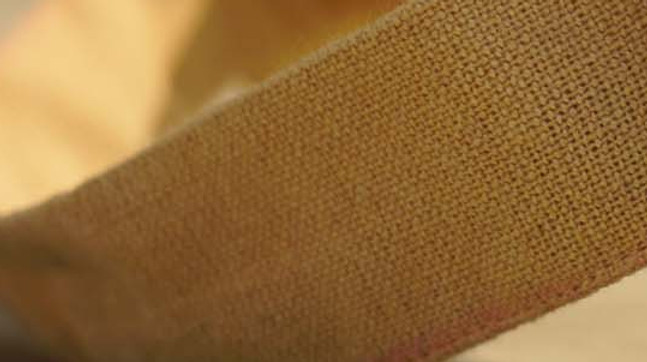




Thuja
winner of wisser and innovation challenge 2.0
Sustainable Design







Thuja
An ergonomic headgear crafted from bamboo, cloth, and natural foam, providing proper cushioning without touching the side of the head or ears. The design includes a unique strap system that allows the headgear to be slid down, transferring weight to the shoulders temporarily, thus relieving the head. This improves daily comfort and promotes sustainability, also empowering local communities to produce and adopt the solution. Its adaptable design ensures accessibility for all tea leaf pluckers, extending benefits to tea plantations worldwide.
Materials : Bamboo, Cotton, wood. Water Hycinth

Approach
community-centric
culturally relevent
ergonomic
This approach not only alleviates daily physical challenges but also fosters a sense of pride and ownership within the community, creating a tangible connection between heritage and practical innovation.
Social impact
Easing Discomfort: Thuja promises to ease pain and reduce stress for female tea estate workers, offering the potential to transform daily routines with improved comfort and renewed energy.
Empowering Local Craftsmanship: By leveraging locally significant, culturally resonant materials, Thuja lays the groundwork for local craftsmen to develop a product by the community, for the community.
Scalable & Sustainable: With materials that have readily available natural replacements, Thuja is designed to be easily replicated and adapted across various regions, paving the way for widespread impact and resilience.

crafted to empower a community, honoring tradition over profit
this product is celebration of culture and nature, a sustainable approach to something natural. the bamboo head gear was a result to empowering local artisans, it ment to be made easily by any localite who have the knowledge of material, its ment to be something from the community to the community
PROCESS

Background
The tea industry employs around 1.2 million permanent workers, thereby being the largest employer in the formal private sector.The Tea Board of India estimates that the industry employs around eight lakh (800,000) workers in Assam alone.This workforce includes those directly involved in cultivation, processing, and packaging, as well as those employed in supporting roles within the tea estates.many tasks within tea estates are manual and labor-intensive. Design interventions that enhance efficiency and reduce physical strain on workers can be highly beneficial. As per a 2021 report, the minimum wage for tea workers in Assam was significantly lower than in other tea-producing states. This highlights the need for design solutions that address worker well-being.
Activity analysis


The Problem
workers in tea garden have to work for
41 to 50 hours per week
Repetitive movement in an awkward posture has been described as causal factor to different
musculoskeletal disorders
In peak season, To achieve the target, workers try to pluck tea leaves quickly neglecting the fatigue, discomfort and its impact on health. This may further lead to permanent discomfort.
41 to 50 hours per week


women
for the
in
tea
Empathy mapping



The Problem
Workers typically carry 20-25 kgs of tea leaves on their heads daily using a plastic rope cushioned by a towel, causing discomfort. Additionally, the traditional jappi(a bamboo hat) often falls off due to wind and movement, though it provides protection from the sun and rain.

Does
Starts her day early—waking as early as 3–6 AM—to complete household tasks by 7:30 AM before heading to the tea gardens at 8. There, she spends the day plucking tea leaves and carrying heavy baskets, earning wages by submitting a minimum of 25 kg twice daily. She takes short breaks in the shade to drink water and has lunch outdoors under the scorching heat. After 5 PM, she works as a servant or maid in bungalows to further supplement her income.
Thinks
Believes that cuts and shoulder pain are simply an inevitable part of leaf plucking—a hardship that becomes normalized over time.
Recognizes that while the work may seem effortless to an onlooker, it requires significant expertise and resilience.
Considers exploring alternative income sources like cattle rearing but feels limited by financial and time constraints.
Understands that access to proper healthcare is essential support amidst daily physical challenges.
Feels
Feels underpaid and financially strained—a constant reminder of the labor’s undervaluation in a daily wage system.
Feels cautiously reassured by improved treatment under government oversight, yet remains burdened by job insecurity.
Feels empowered by the opportunity to support her family, a sentiment deepened by the significant role of women in the sector.
Says
"My shoulder hurts from plucking leaves all day."
"We only earn 1000 per week—men don’t work as leaf pluckers because the income is too low. What can we do about all this?"
"I wish I could have gone to school; almost all of us are illiterate."
"It’s too hot to work here all day."
"After 5, when everyone leaves the plantation, even the workers don’t feel safe because of drunk people roaming around."

concept sheet



Mockups
The project involved extensive collaboration with various stakeholders to ensure its relevance and effectiveness. Organizations such as Tocklai Tea Res. The project involved extensive collaboration with various stakeholders to ensure its relevance and effectiveness. Organizations such as Tocklai
Process




Mockups
The project involved extensive collaboration with various stakeholders to ensure its relevance and effectiveness.

The moulds were then used used to vaccum form with HIPS. (High Impact Polysterene)

Mockup Testing

The moulded part was finely sprayed with two layers of automotive putty.




Mockups
The project involved extensive collaboration with various stakeholders to ensure its relevance and effectiveness.


The project involved extensive collaboration with various stakeholders to ensure its relevance and effectiveness. Organizations such as Tocklai Tea Res
The project involved extensive collaboration with various stakeholders to ensure its relevance and effectiveness.



Head Cushion
Hello/ The project
involved extensive collaboration with
The project involved extensive collaboration with various stakeholders to ensure its relevance and effectiveness. Organizations such as Tocklai Tea Res. The project involved extensive collaboration with various stakeholders to ensure its relevance and effectiveness. Organizations such as Tocklai Tea Res




Role play


